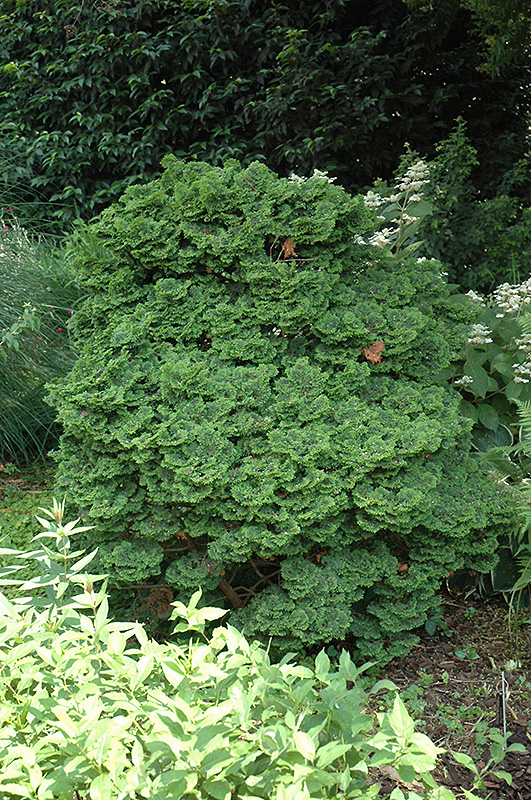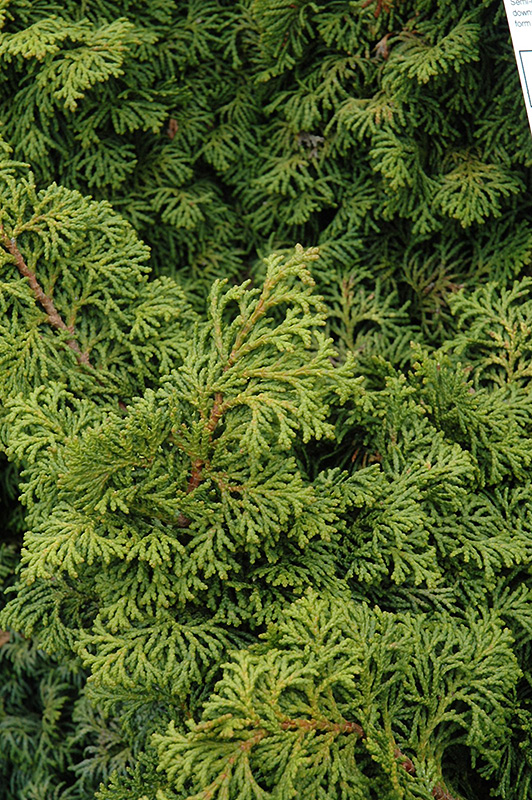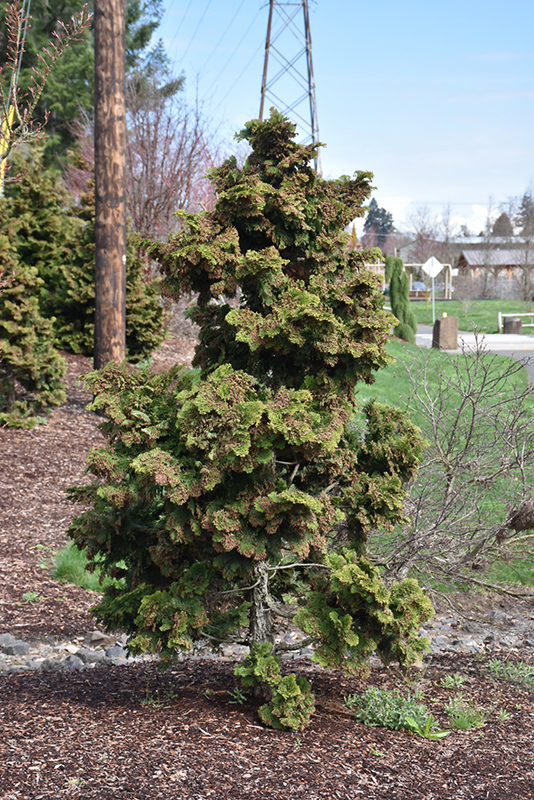>> Home
Koster's Falsecypress
Chamaecyparis obtusa 'Kosteri'
Height: 3 feet
Spread: 3 feet
Sunlight:
![]()
![]()
Hardiness Zone: 5
Description:
A preferred dwarf evergreen shrub for both bonsai and rock gardens, featuring dense sprays of twisted and mossy green foliage on a mounded shape; very slow growing, remains compact without pruning; use as detail in the home landscape
Ornamental Features
Koster's Falsecypress is a dwarf conifer which is primarily valued in the garden for its ornamental globe-shaped form. It has light green evergreen foliage. The scale-like sprays of foliage turn coppery-bronze in the fall, which persists throughout the winter.
Landscape Attributes
Koster's Falsecypress is a dense multi-stemmed evergreen shrub with a more or less rounded form. It lends an extremely fine and delicate texture to the landscape composition which should be used to full effect.
This is a relatively low maintenance shrub. When pruning is necessary, it is recommended to only trim back the new growth of the current season, other than to remove any dieback. It has no significant negative characteristics.
Koster's Falsecypress is recommended for the following landscape applications;
- Accent
- Rock/Alpine Gardens
- General Garden Use
Planting & Growing
Koster's Falsecypress will grow to be about 3 feet tall at maturity, with a spread of 3 feet. It tends to fill out right to the ground and therefore doesn't necessarily require facer plants in front. It grows at a slow rate, and under ideal conditions can be expected to live for 50 years or more.
This shrub does best in full sun to partial shade. It prefers to grow in average to moist conditions, and shouldn't be allowed to dry out. It is not particular as to soil type or pH. It is highly tolerant of urban pollution and will even thrive in inner city environments, and will benefit from being planted in a relatively sheltered location. Consider applying a thick mulch around the root zone in winter to protect it in exposed locations or colder microclimates. This is a selected variety of a species not originally from North America.


